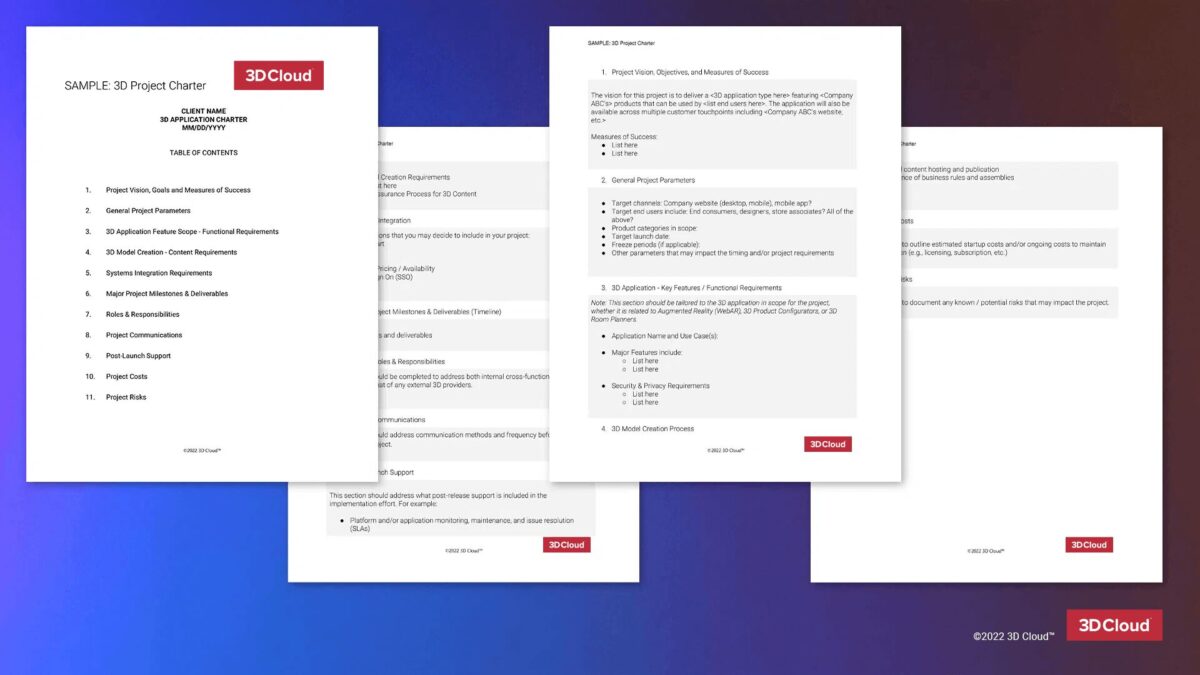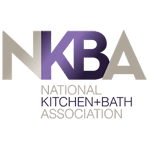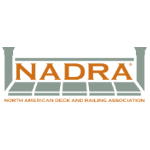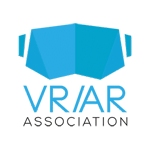Download PDF Template
Download Word Template
Utilizing our many years of experience in running 3D projects, we’ve created this free 3D project charter template to make it easy for you to get started. Download today.
This article covers:
- What is the purpose of a 3D project charter?
- What are the must have elements in your 3D project charter?
- 3D project charter template available for download
A solid 3D project charter is the best way to kick off a 3D initiative and provide a clear path to measurable outcomes and organizational buy-in. This 3D project charter template provides everything you need to get started.
If you’re a marketing, technology, product management, or project management leader charged with a 3D initiative, this is for you.
What is the purpose of a 3D project charter?
A project charter is the best way to drive alignment on cross-functional projects. It clearly defines the vision and goals for the project, the project scope, milestones & deliverables, and roles and responsibilities.
What are the must-have elements specific to any 3D project?
These are the basics that should be included in any project charter.
- Goals and objectives
- KPIs and success metrics
- Scope
- Roles and responsibilities
- Key milestones and deliverables
- Project risks
A deeper look into the essential components of a 3D project charter
When organizing the components of your 3D project charter, make sure to cover the following:
1. Vision, goals, and success metrics:
It’s important to clearly define what you want to accomplish, the desired outcomes, and how it aligns with your overall business objectives.
Vision and goal-setting examples:
- “The vision for this project is to deliver a web-based 3D bathroom planning application featuring (Company ABC) products that can be used by at-home shoppers, store associates, and interior designers.”
- “We want to increase our e-commerce sales by X% through the use of a 3D product configuration application.”
2. General project parameters (audiences and channels):
This section should include intended audiences, both external and internal. It should also cover which channels the application(s) will be made available through (e.g., website, mobile web, integrated within mobile application(s).
Examples of general project parameters include but are not limited to:
- Target channels for the project (e.g., website URL)
- Target audience for the project (e.g., consumers, interior designers, and store associates)
- Content required (e.g., a list of product categories in scope)
- Target launch date
- Freeze periods
3. 3D application feature scope:
This section covers the functional requirements and features/capabilities of the 3D application you need. It is where key priorities are established, and it lays out the non-negotiables when it comes to project scope. Other requirements may be nice to have but have lower priority than those outlined in the scope requirements.
For example, a retailer looking for a 3D room planner might include the following application feature scope in their 3D project charter:
- Create Space Features
- Sample rooms
- Template rooms
- Create floor plan
- Modify floor plan
- Interior walls
- Hide walls
- Design Features
- Drag and drop products
- Room measurements
- Product-to-product measurements
- Shop by category
- Design from photo
This section is absolutely vital to align with both internal stakeholders and external vendors. Vendors providing 3D applications should have a base list of features that to start with. To develop a list that reflects the specific needs of your organization, we recommend organizational interviews with key stakeholders.
If it becomes necessary to issue an RFP, this section can be leveraged to solicit bids from vendors that address specific functional and non-functional requirements.
Resource: RFP Table of Contents for 3D Projects
4. 3D model creation – content requirements:
Whether outsourcing 3D content to a vendor or investing in an in-house content team, it is critically important that 3D content requirements and specifications are crisply defined.
Content teams may request the following to support the creation of 3D models:
- Product information (name, description, color, etc.)
- Pricing and availability (including regional and international)
- Configuration options
- Material, upholstery, and other finish compatibilities
- Installation requirements
- Industry, safety, or legal standards and rules
- Best practices
- Design considerations
5. Systems integration requirements
If there are plans to integrate the 3D application(s) into existing enterprise architecture, such as e-Commerce point-of-sale / add-to-cart, product information management (PIM), or customer relationship management (CRM) systems. Define integration requirements clearly and discuss integration methods and approaches both with vendors and internal technical leads.
6. Roles and responsibilities
When working with a vendor, it’s important to understand what responsibilities the vendor will cover, what must be handled internally, and what roles you need (e.g., Product Manager or Product Owner, Technical Lead, QA Resources, etc.).
Here’s a sample outline of high-level roles and responsibilities for 3D projects that we use with 3D Cloud clients
Resource: “Working with 3D Cloud – What We Do, What You Do.”
7. Post-launch support
Once a 3D application is live, support is essential. Use this section to consider support requirements in the initial days and weeks from the launch to make sure things are working as expected – as well as longer-term support. When working with a 3D vendor, inquire about them what they offer in terms of post-launch support and customer success programs.
3D project charter template (download)
Use this 3D project charter template to make achieving alignment on a 3D project faster and easier.
- Collaborate with internal stakeholders and your external vendor to drive alignment on project scope, milestones, and deliverables
- Define and align roles and responsibilities both of your internal team and of your vendor
- Leverage and reference this document as part of your project kickoff
Download the 3D Project Charter Template
Download PDF Template
Download Word Template

Once the 3D project charter is done, what’s next?
With a finished project charter, you are one step closer to launching a successful 3D project. The next step is to run an RFP process. For a complete guide to launching a 3D project, visit our 3D Project Planning Resource Center or contact us to request a 3D project consultation.












